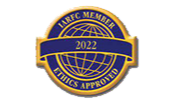Trade policies and tariffs are pivotal in shaping financial markets in an increasingly interconnected global economy. Whether it’s new tariffs on imported goods, renegotiated trade agreements, or shifting geopolitical tensions, policy changes can have far-reaching consequences for investors.
After a volatile week of market swings, the S&P 500 rose 9.52%, the Dow Jones Industrial Average jumped 7.87%, and the Nasdaq Composite soared 12.16%. The bounce came from President Trump’s announcement of a 90-day tariff reduction for over 75 trade partners that had not retaliated against his sweeping trade actions. Still, the relief proved short-lived.
A baseline 10% tariff remains in place for most trading partners, while key nations—particularly China—are seeing even steeper hikes. The dollar dropped 1.5% on the yen to 145.5 and 2% on the franc to 0.8402. Gold climbed toward $3,120 per ounce on Thursday, approaching record levels and building on a more than 3% gain from the previous session, driven by safe-haven demand amid rising US-China tensions.
What’s Changing?
As of April 10, all U.S. imports will be subject to a new 10% tariff. Additionally, the White House is rolling out higher tariffs on specific nations it views as trade adversaries:
- Japan: A 24% reciprocal tariff on Japanese goods has drawn sharp criticism from Tokyo. Foreign Minister Yoshimasa Hayashi warned the U.S. measures could harm bilateral trade and the global economy. Japan and the U.S. are set to begin ministerial talks, including addressing a separate 25% tariff on car imports.
- European Union: New tariffs on 20.9 billion euros ($23 billion) of U.S. goods will be put on hold for 90 days to match President Trump’s move.
- China: An additional 34% tariff, on top of existing levies—including a prior 20% fentanyl-related tariff—bringing the total effective tariff rate on Chinese goods to 145%.
- Canada and Mexico: U.S. neighbors are exempt from the additional 10% tariff under President Trump’s revised “reciprocal tariff” policy. The current U.S. tariff structure on Canadian and Mexican imports of 25% duty on goods is not covered by the USMCA trade agreement and will remain unchanged.
As global leaders weigh retaliatory actions or push for diplomatic resolutions, understanding the investment implications of these sweeping changes is more important than ever for high-net-worth individuals and those nearing retirement.
The Role of Tariffs in the Global Economy
Tariffs are taxes on imported goods designed to make foreign products less competitive than domestically produced alternatives. They play a significant role in shaping global trade policies and economic strategies. With the Trump Administration’s second term introducing new trade measures, investors should consider how these changes may impact different sectors. Governments impose tariffs for several reasons, including the following:
- Protecting domestic industries from foreign competition.
- Generating government revenue.
- Counteracting unfair trade practices such as dumping or intellectual property theft.
- Gaining political leverage in international negotiations.
While tariffs can offer short-term economic benefits, they often trigger retaliatory measures from trading partners, potentially disrupting global supply chains and increasing market volatility.
Given these uncertainties, portfolio diversification remains a key strategy for helping manage risk. Now may be an opportune time to assess whether your portfolio aligns with your long-term financial goals. Some investors incorporate high-quality short-term bonds, higher-yielding “plus” sector bonds, and alternative investments into their risk management strategy.
However, investment strategies should be tailored to individual financial needs. Consulting a fiduciary can help ensure financial decisions align with long-term objectives.
Understanding New Developments in Trade Policies
Trade policies constantly evolve, with administrative shifts, economic conditions, and international relations influencing decisions. Key developments that could potentially affect investment portfolios include the following:
1. U.S. & China Trade Relations
The trade relationship between the U.S. and China remains a focal point of global economic policy, with recent developments escalating tensions. President Trump has significantly escalated trade tensions with China by increasing tariffs on Chinese imports to an effective rate of 145%.
Here are the key takeaways:
- China’s Retaliation: In response, China has imposed retaliatory tariffs of 84% on U.S. goods, further intensifying the trade conflict.
- Market Impact: These developments have led to heightened volatility in global markets, with significant fluctuations in major stock indices.
- Diplomatic Efforts: Both nations are negotiating to address the escalating trade tensions, though challenges persist in reaching a resolution.
The situation remains dynamic, with ongoing developments that could have significant economic and geopolitical implications. Investors should closely monitor potential shifts in trade policy and assess risk exposure in sectors affected by these tariffs and regulatory changes. A fiduciary can provide guidance on adjusting investment strategies in response to evolving trade policies, helping investors mitigate risk and identify potential opportunities.
2. European Union Trade Policies
The EU has introduced measures to counteract U.S. tariffs, particularly on imports of steel, aluminum, and technology. As of April 10, 2025, the European Union (EU) is actively addressing recent U.S. tariff actions and adjusting its trade policies accordingly. Here’s how:
- EU Response to U.S. Tariffs: Initial U.S. Tariffs: President Donald Trump imposed a 20% tariff on EU goods as part of broader measures targeting multiple trading partners.
- EU’s Retaliatory Measures: In response, the EU approved retaliatory tariffs on over $23 billion worth of U.S. goods, including products like soybeans, motorcycles, meat, textiles, tobacco, and ice cream. These measures were set to be implemented gradually.
- 90-Day Pause: Subsequently, President Trump announced a 90-day pause on the newly imposed tariffs to allow for negotiations. Aligning with this, the EU decided to suspend its planned retaliatory tariffs for the same duration, aiming to facilitate dialogue and help seek a negotiated resolution.
Investors with exposure to European equities or multinational corporations should monitor these changes closely. Working with a fiduciary can help them navigate the potential risks and opportunities these policy shifts present and help ensure their investment strategies remain aligned with long-term financial goals.
How Trade & Tariff Changes Can Impact Investment Portfolios
Trade policy changes can introduce risk and opportunity across asset classes for HNWIs and retirement-focused investors. Understanding the potential consequences can be essential to help with effective portfolio management.
1. Market Volatility & Equity Performance
Tariff announcements can trigger market fluctuations. For instance, when tariffs on Chinese goods were first announced in 2018, the S&P 500 experienced short-term volatility as investors reacted to potential profit margin squeezes. Here are some other considerations:
- Sector-specific impacts: Due to their supply chain dependencies, industries like technology, manufacturing, agriculture, and consumer goods often react more sharply to trade policy changes.
- International investments: Companies with significant foreign operations may see revenue declines or gains based on shifting trade agreements.
2. Commodity Prices & Inflation Risks
Tariffs on raw materials like steel, aluminum, and agricultural products can increase business costs, reduce profit margins, and affect stock valuations. Companies may raise prices to offset higher production expenses, leading to higher consumer costs, shifts in spending habits, and potential economic slowdowns.
These inflationary pressures can also affect interest rates and bond markets, with broader financial implications:
- Interest rates and inflation: If tariffs drive inflation higher, central banks may respond by adjusting interest rates, which can impact bond performance and fixed-income investments.
- Corporate bonds: Companies facing higher costs due to tariffs may experience credit rating changes, influencing corporate bond yields and risk levels.
By monitoring these factors, investors can better understand how trade policies may impact various asset classes.
3. Currency Fluctuations & Emerging Markets
- Strengthening or weakening of the U.S. dollar: Trade tensions can drive capital flows into or out of the U.S. dollar, impacting foreign exchange rates and international investments.
- Emerging market volatility: Countries reliant on exports, such as China, Brazil, or India, may experience economic slowdowns or growth spurts depending on U.S. trade policies.
Strategies to Navigate Trade Policy Uncertainty
While predicting every trade policy shift is impossible, investors can take proactive steps to help mitigate risk and seize potential opportunities. At Agemy Financial Strategies, we support investors in navigating economic uncertainties by creating personalized financial plans tailored to their unique risk tolerance and long-term goals. Our fiduciary team can help with the following:
1. Diversification Across Sectors & Geographies
A well-diversified portfolio can help mitigate the risks of shifting trade policies by reducing reliance on any single sector or region. Allocating assets across various industries—technology, healthcare, and real estate—can help balance exposure to trade disruptions. Our team can help assess your portfolio’s risk exposure, identify opportunities for diversification, and adjust asset allocation to align with long-term financial goals in an evolving global market.
2. Monitoring Tariff-Exposed Industries
Investors should closely monitor how tariffs impact different sectors. Companies reliant on global supply chains may face challenges, while domestic suppliers or businesses in alternative markets could see opportunities. Understanding these dynamics is key to making informed investment decisions. The fiduciaries at Agemy Financial Strategies can provide guidance on navigating these shifts, helping align your investment strategy with changing market conditions.
3. Evaluating Fixed Income Positions
Rising interest rates driven by tariff-induced inflation can significantly impact bond holdings. Investors should consider adjusting bond duration, credit quality, and diversification strategies to help hedge against interest rate fluctuations. Agemy Financial Strategies can provide insights on balancing risk and return, helping you align with your long-term financial objectives.
4. Staying Informed With Ongoing Market Insights
Navigating the complexities of global trade requires staying informed about evolving economic policies and market trends. Working with a financial professional can help provide valuable insights into how trade developments may impact investment strategies. Key factors shaping the investment landscape include:
- Geopolitical Tensions: U.S.-China relations, European trade policies, and global sanctions may continue influencing markets.
- Supply Chain Reshoring: Companies are increasingly shifting production closer to home, which could present long-term investment opportunities in domestic manufacturing.
- Emerging Tech & Trade: Sectors like artificial intelligence (AI), semiconductors, and green energy will be critical areas influenced by international trade policies.
For over 35 years, Agemy Financial Strategies has been committed to educating clients and providing insights on how evolving policies may impact their financial future. Our team helps investors stay ahead of market changes and adapt their portfolios to navigate shifting trade landscapes with confidence.
Final Thoughts
Trade policies and tariffs are ever-evolving factors that influence global markets, business operations, and investment strategies. While they can introduce uncertainty, they also present opportunities for those who proactively adjust their portfolios and stay informed.
Strategic diversification and a clear understanding of sector-specific impacts are key to navigating these changes for high-net-worth individuals and retirees. At Agemy Financial Strategies, we provide personalized financial education and insights to help investors make informed decisions amid shifting economic policies.
Ready to take control of your financial future? Contact us today for a complimentary consultation and discover how our team can help you manage risk and seize opportunities in an evolving global economy.
Trade & Tariffs FAQs
How do tariffs impact stock market performance?
Tariffs can introduce market volatility as companies adjust to higher costs and shifting trade dynamics. Certain sectors, such as technology and manufacturing, may experience more significant fluctuations based on tariff announcements and global trade relations.
Should I adjust my portfolio in response to new tariffs?
While it depends on your investment strategy and risk tolerance, diversification across sectors and regions can help mitigate the impact of trade policy changes. Consulting with a fiduciary advisor at Agemy Financial Strategies can help provide insight.
What industries are most affected by trade policies?
Industries such as technology, manufacturing, agriculture, and consumer goods are often highly sensitive to tariff adjustments. Additionally, companies reliant on global supply chains may experience pricing and operational challenges.
How can I stay informed about trade policy changes?
Monitoring economic reports, government announcements, and market analyses can help investors stay updated. Financial professionals at Agemy Financial Strategies can help you by providing ongoing insights and strategic guidance.
Disclaimer: This content is for educational purposes only and should not be considered financial or investment advice. Please consult with the fiduciary advisors at Agemy Financial Strategies before making any investment decisions.



